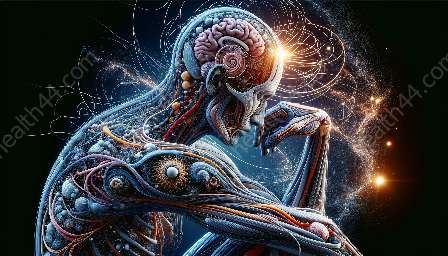The study of endocrine anatomy provides a deeper understanding of the structures and functions of the endocrine system, which plays a crucial role in regulating various bodily processes. This comprehensive guide aims to explore the intricacies of endocrine anatomy in an informative and engaging manner.
The Endocrine System
The endocrine system is a complex network of glands that produce and secrete hormones, which act as chemical messengers, regulating the functions of various organs and tissues in the body. The major glands of the endocrine system include the pituitary gland, thyroid gland, parathyroid glands, adrenal glands, pancreas, and reproductive glands (ovaries and testes).
Endocrine Glands
Endocrine glands are specialized structures that are responsible for the production and secretion of hormones. These glands do not have ducts and release hormones directly into the bloodstream. Each endocrine gland is associated with specific hormones and plays a crucial role in maintaining homeostasis and regulating bodily functions.
Pituitary Gland
The pituitary gland, often referred to as the master gland, is located at the base of the brain and is divided into anterior and posterior lobes. It secretes a variety of hormones that control other endocrine glands and influence growth, metabolism, sexual development, and reproduction.
Thyroid Gland
The thyroid gland is situated in the neck and produces hormones that regulate metabolism and energy levels. It plays a key role in maintaining the body's metabolic rate, heart and digestive function, muscle control, brain development, and bone maintenance.
Parathyroid Glands
The parathyroid glands are small, pea-sized glands located near the thyroid gland. They produce parathyroid hormone, which helps regulate calcium levels in the body, playing a critical role in bone health and neuromuscular function.
Adrenal Glands
The adrenal glands, situated on top of the kidneys, produce hormones such as cortisol, aldosterone, and adrenaline. These hormones play vital roles in regulating stress responses, blood pressure, metabolism, and immune function.
Pancreas
The pancreas functions as both an exocrine gland, producing digestive enzymes, and an endocrine gland, producing insulin and glucagon, which regulate blood sugar levels. Dysfunction of the pancreas can lead to conditions such as diabetes mellitus.
Reproductive Glands
The reproductive glands include the ovaries in females and the testes in males. They produce sex hormones such as estrogen and testosterone, which play crucial roles in sexual development and reproductive function.
Hormones
Hormones are chemical messengers produced by the endocrine glands and released into the bloodstream, where they travel to target cells or organs to exert their effects. They play a fundamental role in regulating various physiological processes, including metabolism, growth and development, tissue function, and mood.
Types of Hormones
There are three main types of hormones: amino acid-based hormones, peptide hormones, and lipid-derived hormones. Each type of hormone has specific characteristics and functions, influencing various physiological processes in the body.
Hormone Regulation
The secretion and regulation of hormones are tightly controlled to maintain balance within the body. Hormone levels are regulated through feedback mechanisms involving the endocrine glands, target organs, and the brain, ensuring precise control of physiological processes.
Endocrine Disorders
Disruptions in the normal functions of the endocrine system can lead to various disorders and health conditions. Endocrine disorders may arise due to hormone imbalances, abnormal gland function, or dysfunction in the feedback mechanisms regulating hormone levels.
Common Endocrine Disorders
- Diabetes mellitus: A condition characterized by high blood sugar levels due to inadequate insulin production or insulin resistance.
- Hyperthyroidism: Overproduction of thyroid hormones, leading to symptoms such as weight loss, rapid heart rate, and anxiety.
- Hypothyroidism: Insufficient production of thyroid hormones, causing symptoms such as fatigue, weight gain, and cold intolerance.
- Adrenal insufficiency: Inadequate production of adrenal hormones, resulting in fatigue, muscle weakness, and low blood pressure.
- Polycystic ovary syndrome (PCOS): A hormonal disorder in females, characterized by irregular periods, excessive androgen levels, and ovarian cysts.
Diagnosis and Treatment
Endocrine disorders are diagnosed through a combination of medical history, physical examination, and laboratory tests to assess hormone levels. Treatment approaches for endocrine disorders vary depending on the specific condition and may include hormone replacement therapy, medication, lifestyle modifications, or surgery.
Conclusion
Understanding endocrine anatomy is essential for health professionals and individuals seeking to comprehend the intricate network of endocrine glands and hormones regulating bodily functions. This comprehensive guide aims to provide a detailed exploration of endocrine anatomy, emphasizing the importance of the endocrine system in maintaining overall health and well-being.


